
Can you put aluminum foil in the oven?
Many recipes recommend covering or wrapping your food in aluminum foil while it cooks. However, there may be instances where using aluminum foil may not be recommended. If you’re using aluminum foil as an oven liner, it could cause more harm than good. Read on to learn more about the best uses for aluminum foil in the oven.
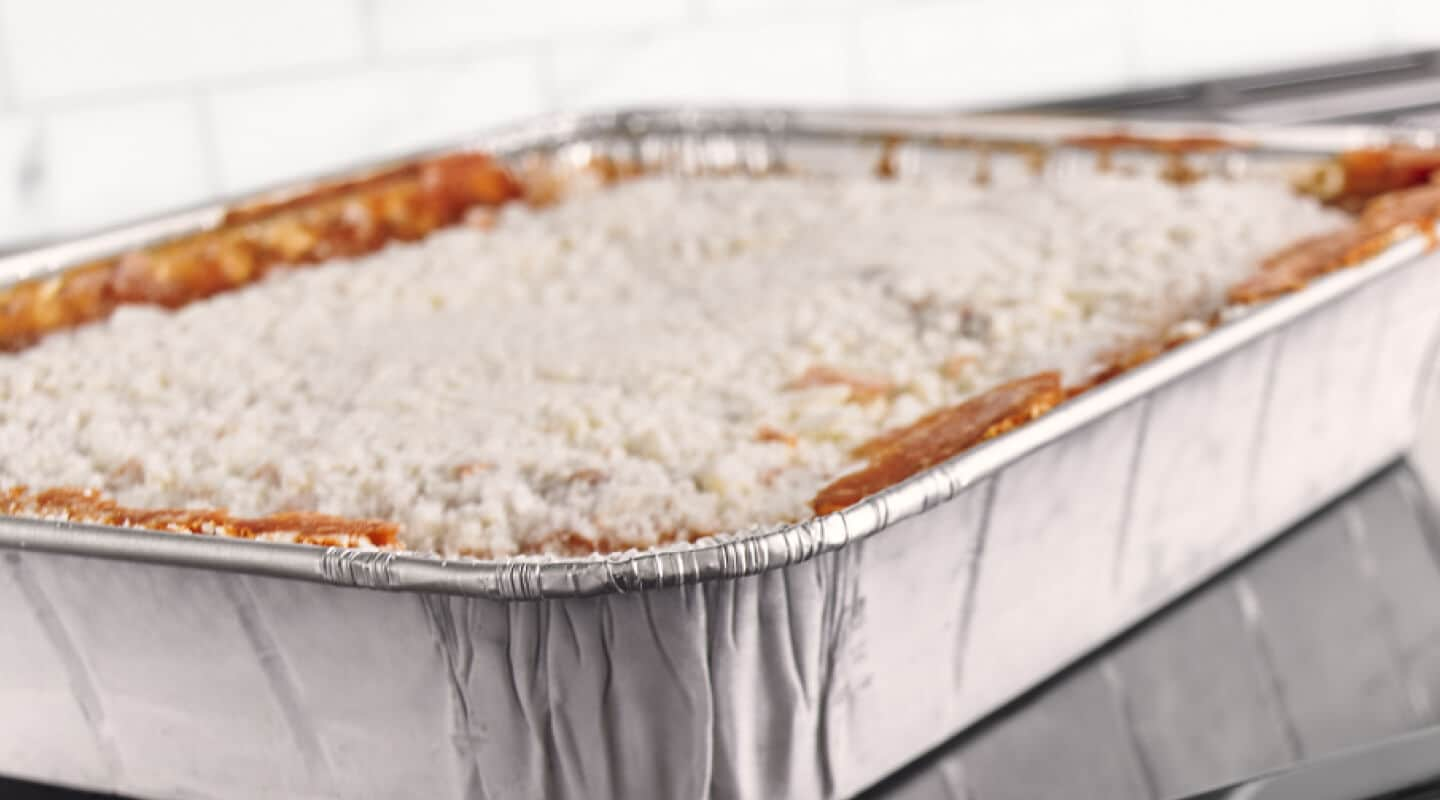
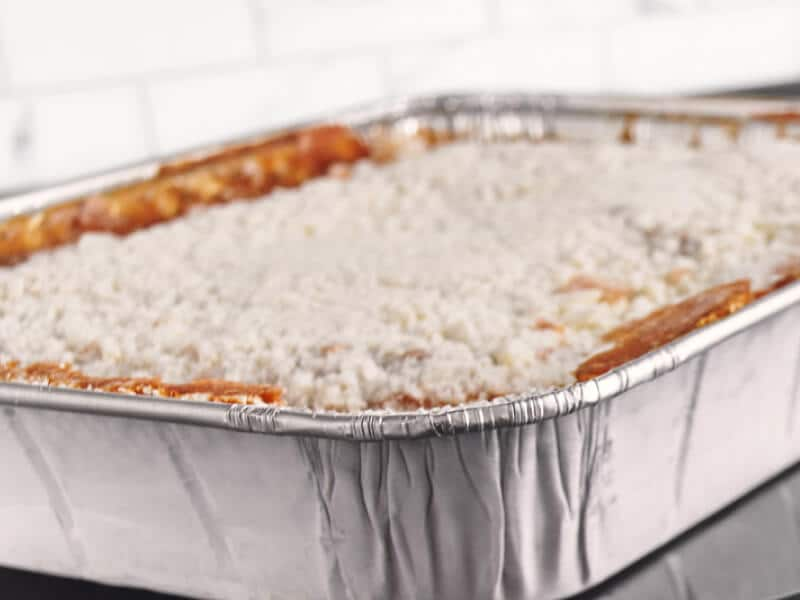
What is aluminum foil?
Aluminum foil is a thinly rolled sheet of aluminum that has claimed its place as a common kitchen staple. Generally, using aluminum foil in the oven is safe, offering efficient heat conduction and simplifying cleanup. More flexible and sturdy than tin foil, aluminum foil reflects heat and can typically tolerate the highest baking temperatures in most residential kitchen ovens, making it a great baking companion.
Is it safe to cook with aluminum foil?
Food-safe aluminum foil can be used for a variety of cooking applications. If you’re using aluminum foil when cooking, always refer to the manufacturer’s instructions for guidelines on how to best use that specific foil.
How to use aluminum foil in your oven
If you’re lining baking sheets, wrapping up food or covering it up to retain moisture, then aluminum foil is the way to go. Keep reading to learn about different ways you can use aluminum foil in your oven.

Line baking sheets and pans
Using aluminum foil to line baking sheets and pans is a great way to guarantee an easier cleanup—and may help reduce the frequency needed to clean your oven. After baking cookies, breads or other foods, you can simply slide or lift the cooled foil from the pan to remove baked items.
Due to how it’s manufactured, aluminum foil has a dull surface on one side and a shiny surface on the other. Non-stick aluminum foil features a non-stick coating on the dull side, which can be used when you’re baking stickier foods. Otherwise, you can help promote browning on certain foods by facing the dull side down.

Cover dishes
Covering dishes with aluminum foil when baking helps lock in moisture. Loosely placing or tenting a sheet of foil over a dish can prevent the top from browning while the rest of your dish continues to bake. If you’re looking to create more steam in the baking process, sealing the dish tightly with a foil lid will often do the trick.

Use disposable baking dishes
Disposable baking dishes like aluminum pans and trays can be a convenient alternative to metal dishes. Like aluminum foil, they can tolerate any temperature the oven can throw at them and have heat conduction properties that help readily transmit heat to your food.
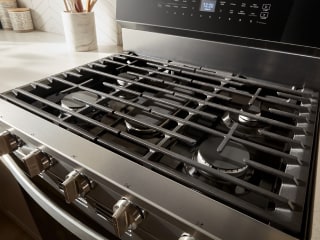
Compare different types of ranges
Can you broil with aluminum foil in the oven?
In general, it is fine to use aluminum foil to line the pan when broiling, but be mindful of cooking temperatures and the type of foil you’re using. Foil should hold up to temperatures less than 1220°F. Most residential ovens with a broil function reach temperatures around 500°F to 550°F, well below the melting point of aluminum foil, so it is generally okay to use foil when broiling. When using a broiler pan, it is also a good idea to cut slits in your foil, so that fat and grease from your food can drip into the lower pan, if necessary.
Learn more about microwaving aluminum foil.
Why can’t I use aluminum foil as an oven liner?
Using aluminum foil to keep your oven clean may be tempting, but lining an oven with foil increases the intensity of heat on oven surfaces, which can lead to surface damage like scratching or chipping on the porcelain finish and damage to heating elements. It can also prevent even cooking.
Foil is heat resistant, but it isn’t completely heat-proof. Using high heat with aluminum foil in the oven bottom could cause the foil to melt, permanently damaging your appliance. Using aluminum foil as an oven liner can also cause the following issues:
Using foil on oven racks can disrupt heat distribution in the oven and interfere with optimal cooking results.
Covering up vent openings in the bottom of the oven can lead to insufficient air flow, problems with heat distribution and issues with performance.
Heat reflecting off aluminum foil can overcook food or damage your oven’s heating elements.
Lining your gas oven with aluminum foil can block heat and air flow, and produce less than optimal cooking results.
Aluminum foil can cause scratching of the oven's enamel surfaces, and can also melt when contacting hot surfaces or elements, potentially causing cosmetic or permanent functional damage to elements or surfaces.
If you’ve used aluminum foil in your oven in the past, you may want to make sure it didn’t affect the heating elements or other oven parts. Take some time to calibrate your oven, and schedule a professional service appointment if you think something is amiss.
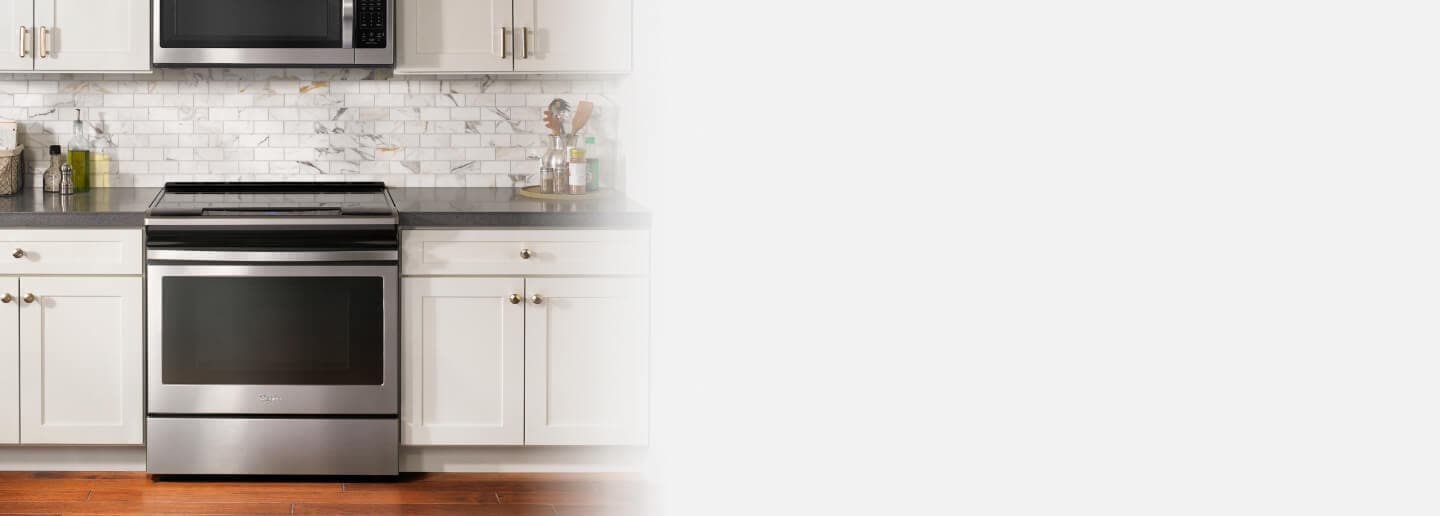
Whirlpool® Ranges
A range for every home
Find the range you need with the design and features you love when you explore ranges from Whirlpool brand
What should I use instead of aluminum as an oven liner?
Since you shouldn’t use aluminum foil in the bottom of your oven, what should you use instead? If you want to avoid cleaning up caked-on drips and spills, there are a few alternative solutions that you can try.

Empty baking dishes or trays
Put an empty baking dish on the rack below the food you are cooking. It will help catch drips and make clean-up easier. Metal baking sheets can warp during sudden temperature shifts, so place the empty dish in the oven as the oven preheats to help prevent warping.

Silicone oven liners
You could use a silicone oven liner on your cooking racks, but always check the manufacturer’s instructions on the particular liner you are using to make sure it is compatible with your oven. These heat-resistant, non-reflective accessories may help you keep your oven clean, but could have some impact on baking performance if not used properly. Help air circulate by including at least 3 inches of clearance between the liner sheet and oven walls for optimal heat transfer.
Be aware that oven liners are only suitable for some electric or convection ovens and should never be placed on the bottom of the oven. Always check the product specifications. Although gas ovens, microwaves and countertop microwaves from Whirlpool brand are also options for cooking or heating similar food items, oven liners are not suitable to use in these appliances.

Parchment paper
If you’re looking for alternatives to using aluminum foil on baking sheets, consider parchment paper. It is non-reflective and won’t scratch non-stick surfaces. Before using parchment paper, it is important to review the manufacturer’s recommendation for max parchment bake temperatures. Generally speaking, parchment paper should never touch the sides of your oven or be used for intense radiant cooking functions over 450°F (i.e. broiling at any temperature). Additionally, do not use parchment paper in gas ovens with an exposed flame.

5-in-1 Oven
Cook however you want with 5 cooking modes
This range gives you the flexibility to cook a variety of dishes with Air Fry, Convect Bake, Broil, Frozen Bake™ and Bake
Discover Whirlpool® Ovens and Ranges
With Whirlpool® Ovens and Ranges, you can count on various features designed to help keep your oven clean. Select ovens and ranges include a self-cleaning system, like the Adjustable Self-Clean Cycle that cleans your oven in under an hour.


Helping kids stay in school
Learn how Whirlpool helps end the dropout cycle by giving kids access to clean clothes through the Care Counts™ Laundry Program
Was this article helpful? Pass it on
Discover more from Whirlpool Brand
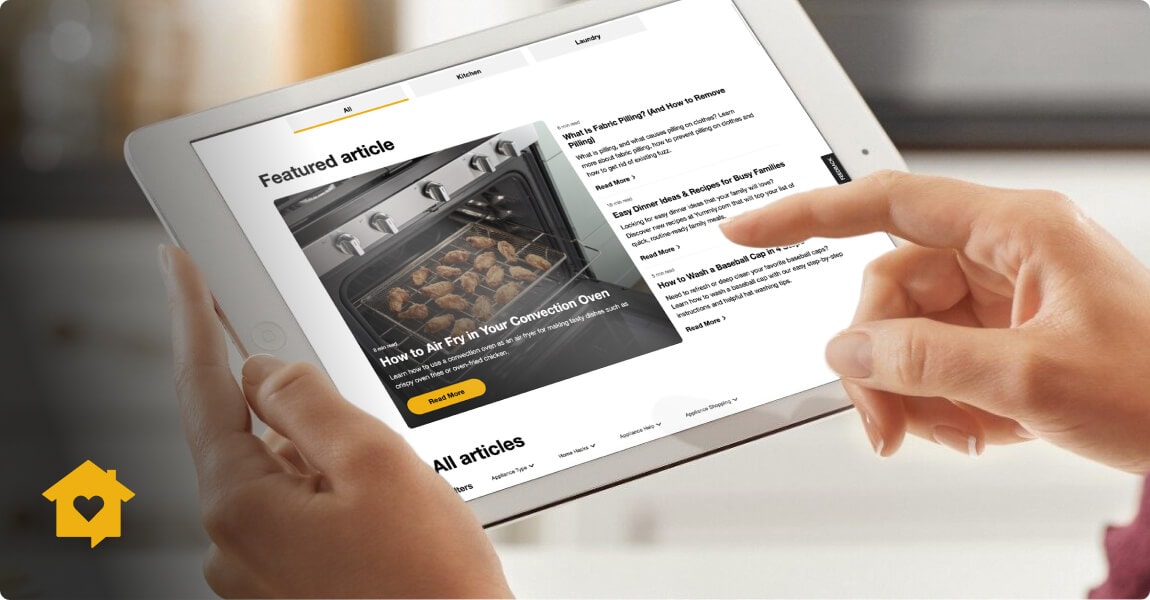

home heartbeat
Ready for more tips, home hacks and appliance guides?



